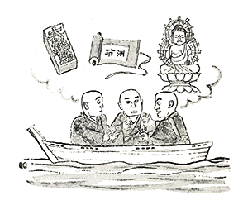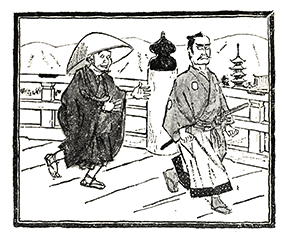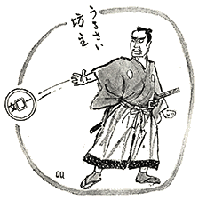Use of Cookies
Our website uses cookies to facilitate and improve your online experience.
Long ago, travel between Kyoto and Osaka was by boat on the Yodo River. One day, three young monks happened to board the boat together. They were Kokei of the Todaiji in Nara, Manzan of the Soto School, and Tetsugen of the Obaku School of Zen. The karmic affinity which led them to travel in the same boat was not shallow; and they recounted to each other the vows which they had taken.
Kokei of Todaiji: “During the wars the Great Buddha Hall was burned, down, and I cannot bear to see the Great Buddha of Nara exposed to the rain. Somehow, during my life, I want to rebuild the Great Hall.”

Manzan of the Soto School: “The Zen School reveres the Transmission of the Lamp, and everyone places emphasis on his Dharma Lineage, but today the lines of transmission are so disarranged that no one knows how many generations distant they are from Dogen Zenji, and no one can make heads or tails of these important genealogies. I want to straighten this out and make it easily understandable for everyone from which lineage they derive and how many generations distant from Dogen Zenji they are.”
Tetsugen of the Obaku School: “More than a thousand years have passed since Buddhism was introduced to Japan, but a complete collection of the sutras has yet to be published here. Right now, we are relying on sutra books printed in Sung China, Ming China and Korea. If we do not use these books, we are in the position of having to copy them one by one, and therefore, I want to print the entire collection.”
These were all the kind of people who leave their mark on history, and each of them from their early years lived under an extraordinarily great vow. Plus, the fact that they all lived during the same era, and all rode together on the same boat is unprecedented.
After that chance meeting, twenty years passed. Kokei went around the whole country collecting donations, and finally in 1709 the Great Buddha Hall of Nara, now known as the largest wooden structure in the world, was solemnly but happily dedicated. Manzan also had stayed busy, and finally in 1699 got some action out of the Shogunate and fulfilled his words by correcting the disarray in the line of succession of the Soto School. Tetsugen splendidly carried out his pledge to publish the complete scriptures in 1678.
Because the printing of the scriptures vowed by Tetsugen required carving several tens of thousands of wood block plates, a tremendous expenditure of money would be incurred, and Tetsugen responded to this challenge with a superhuman devotion. About the time he had collected sufficient funds for the publication, a great famine occurred and the victims of the famine were wandering up and down the roads, some even dying of hunger. Seeing this, Tetsugen freely gave away as relief money all the funds which he had collected with so much trouble for his vow; he started over from zero. When this second fund-raising had just about reached the point where publication became possible, once again famine accompanied by floods came upon the land, and as he had done the previous time, Tetsugen donated the money for the relief of the people. However, the third time he collected funds, he was able to achieve his goal.
The first day of this third effort, Tetsugen stood at the approach to the busy Sanjo Bridge and requested donations of passersby. The very first man to come by was a samurai, and in spite of Tetsugen’s earnest entreaties he passed on by pretending not to notice.
Tetsugen followed:

“Please contribute, even if it’s only a small amount”
“No! I won’t.”
“Please?”
“No!”
This dialogue continued for four miles. Finally, in spite of himself, the hard-hearted samurai was worn down and said, “What a pest this monk is!” and threw a penny at Tetsugen.
“Thank you. Thank you,” Tetsugen said.
Seeing how politely Tetsugen received the money and thanked him, the samurai asked, “Honorable monk, you must tell me why you are so happy after following me so far to receive only a penny.”
“Today is the first day I have begged for donations after making a great vow, and you are the first gentleman to give; if I had not been able to get this first penny, perhaps a doubt would have come into my mind. But now that I have received this donation, I firmly believe that I will be able to accomplish the vow. That is why I am happy,” answered Tetsugen, evidently pleased with himself. Then he returned to the place where he was originally standing by the Sanjo Bridge.

The collected sutras which have come down to us today as the Obaku Edition of the Collected Sutras amounts to 6771 volumes. And this work was completed due to Tetsugen Zenji’s unstintingly pure spirit in carrying out his vow.
Four Vows
Beings are numberless; I vow to free them.
Delusions are inexhaustible; I vow to end them.
Dharma gates are boundless; I vow to enter them.
The Buddha ways is unsurpassable; I vow to realize it.
